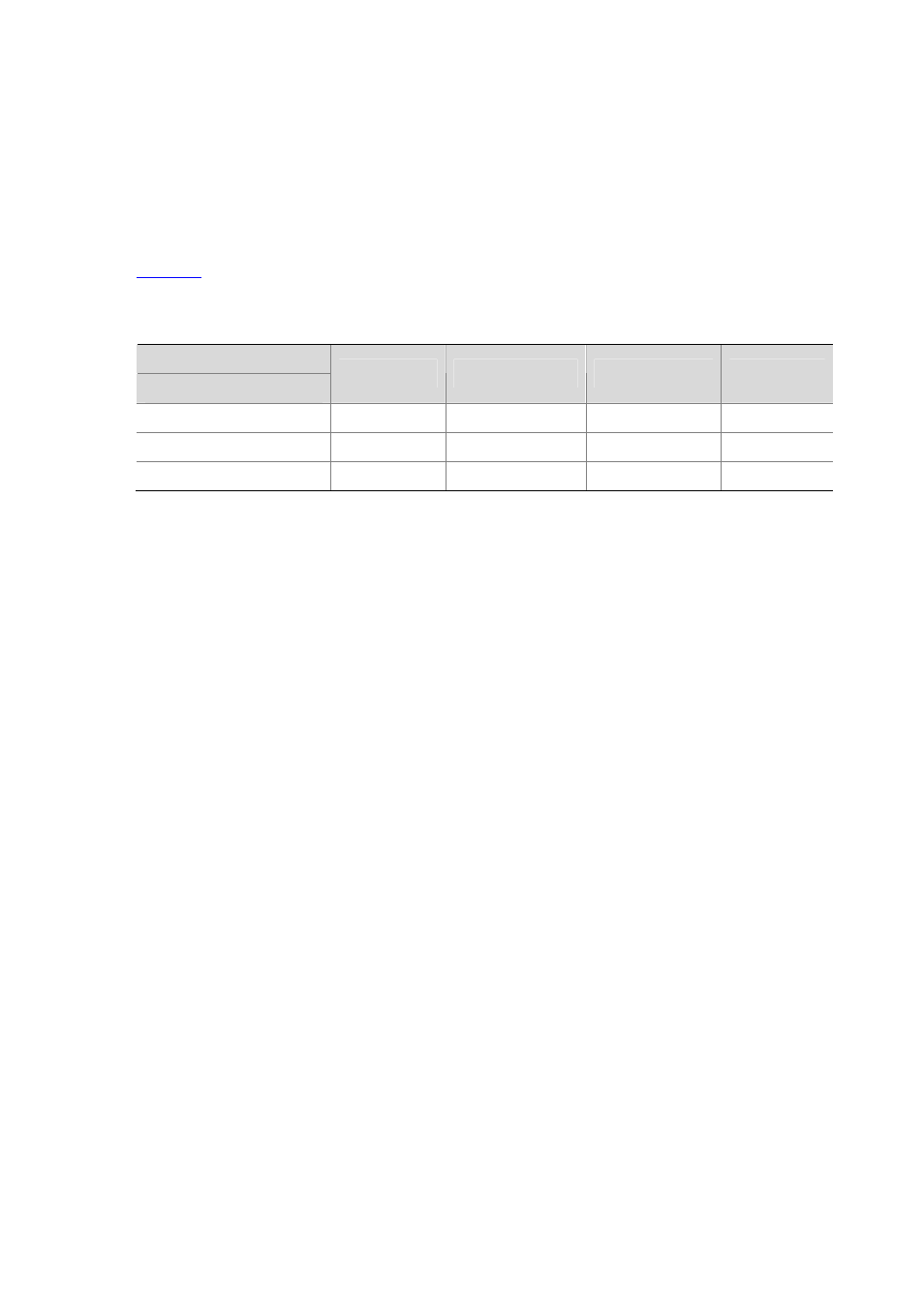Encapsulation formats, Implementation of protocol-based vlan – H3C Technologies H3C S3100 Series Switches User Manual
Page 91

1-9
Packets with the value of the type or length field being in the range 0x05DD to 0x05FF are regarded as
illegal packets and thus discarded directly.
The switch identifies whether a packet is an Ethernet II packet or an 802.2/802.3 packet according to
the ranges of the two fields.
Encapsulation Formats
lists the encapsulation formats supported by some protocols. In brackets are type values of
these protocols.
Table 1-4 Encapsulation formats
Encapsulation (left)
Protocol (down)
Ethernet II
802.3 raw
802.2 LLC
802.2 SNAP
IP (0x0800)
Supported
Not supported Not
supported Supported
IPX (0x8137)
Supported
Supported Supported Supported
AppleTalk (0x809B)
Supported
Not supported Not
supported Supported
Implementation of Protocol-Based VLAN
S3100 series Ethernet switches assign the packet to the specific VLAN by matching the packet with the
protocol template.
The protocol template is the standard to determine the protocol to which a packet belongs. Protocol
templates include standard templates and user-defined templates:
z
The standard template adopts the RFC-defined packet encapsulation formats and values of some
specific fields as the matching criteria.
z
The user-defined template adopts the user-defined encapsulation formats and values of some
specific fields as the matching criteria.
After configuring the protocol template, you must add a port to the protocol-based VLAN and associate
this port with the protocol template. This port will add VLAN tags to the packets based on protocol types.
The port in the protocol-based VLAN must be connected to a client. However, a common client cannot
process VLAN-tagged packets. In order that the client can process the packets out of this port, you must
configure the port in the protocol-based VLAN as a hybrid port and configure the port to remove VLAN
tags when forwarding packets of all VLANs.
